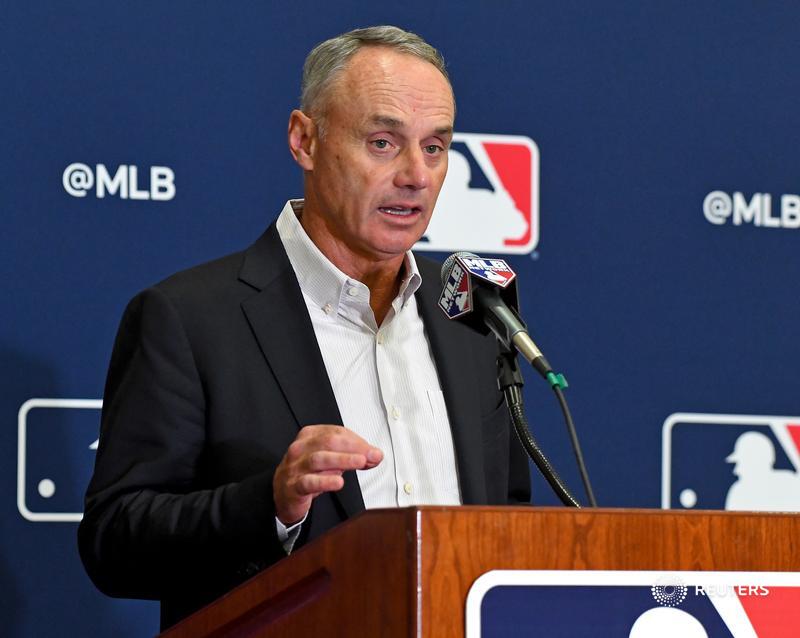

What if the system that is supposed to help baseball grow is killing it? For too long, the people in charge of America’s favorite pastime have watched from afar, maybe thinking that the college ranks were a self-sustaining talent pool. But a storm is developing. A perfect storm of misplaced priorities and unrestrained ambition that might wipe out the fundamental cornerstone of MLB’s future: Its pitchers. But how?
Watch What’s Trending Now!
It was a fine evening at Boston College, with a younger pitcher showcasing a good show. But was it something to be proud of? A.J. Colarusso of Boston College reached the mound for the second time in four days. He threw 109 pitches on the final night, raising his total for the week to an incredible 237. The numbers are incredible. But did they not read the MLB guidelines?
MLB’s Pitch Smart program says pitchers between the ages of 19 and 22 should take at least five days off after throwing more than 106 pitches in a game. But Colarusso didn’t get to rest. The situation is worrisome. And on top of that, the ACC put his numbers on X. But is it something that needs a celebration? The incident hasn’t gone unnoticed, and an MLB insider has made a plea for Rob Manfred to look into the matter.
ADVERTISEMENT
Keith Law of The Athletic penned it down in his column. He wrote, “The MLB Commissioner’s Office seems to think that delegating more player development to the college ranks is a good thing. It might save money, but to steal a line from P.J. O’Rourke, handing the development of young pitchers over to college coaches without any restrictions in place is like handing car keys and whiskey to a teenage boy. If the NCAA won’t step in and regulate itself, MLB shouldn’t allow the college ranks to have any more power than they already have.”
This comparison isn’t an appealing speech but a clear warning. Without proper control, the people who are supposed to be helping young people grow and learn could unintentionally put them on a path to damage and unfulfilled potential. It’s high time MLB stepped in and asked the NCAA some questions.
And he’s not the only one. Jack Cline of Arkansas-Little Rock tossed 134 pitches in a complete-game triumph just a few days after throwing 69 pitches. Colton Cosper of Mercer and Chandler Benson of Abilene Christian threw more than 139 pitches in a single game. These examples show a worrying pattern of overuse in collegiate baseball.
ADVERTISEMENT
The results are terrible. The American Journal of Sports Medicine released a study that indicated pitchers who threw over 100 innings in a year were 3.5 times more likely to get injured badly. Also, the rise in Tommy John surgery among young pitchers shows how dangerous it is to misuse your arm in the long run. And that injury bug is not something anyone is fond of.
Injuries have become a serious concern in baseball over the past few years, and even Rob Manfred has addressed this issue.
ADVERTISEMENT
Can Rob Manfred save pitchers from a system built to break them?
Who doesn’t like speed? Be it in Majors or college baseball, everyone is a fan of velocity. But is this okay? Well, looking at the injuries to the pitchers and not taking rest, it’s not!
MLB has been dealing with many pitcher injuries lately, leading Commissioner Rob Manfred to investigate the reasons behind this trend. In a recent interview, Manfred said that the focus on velocity and spin rate in player development is a big worry. He said that when players enter the major leagues, “They’re already damaged goods.” He blamed this on the way the game is taught, which puts a lot of emphasis on these measurements.
ADVERTISEMENT

ADVERTISEMENT
This emphasis on speed and spin rate is not merely a coaching philosophy but also shows how the league rewards players. Manfred said that the existing system, which guarantees contracts no matter what, unintentionally pushes players’ bodies to the limit to go faster and spin faster. This pursuit could be profitable, but it also raises the chance of damage. Manfred said, “The incentives there that apply to the athlete are really misdirected. They actually encourage behavior that increases injuries.”
The fact that MLB rosters are based on transactions makes the problem even worse. Teams can easily switch pitchers in and out, making it easy for them to replace injured guys. This flexibility makes it less of a big deal for organizations when a pitcher gets hurt, which could make them less concerned about the long-term health of their players. Manfred said changing the transaction rules could make teams more likely to put pitcher durability ahead of short-term performance improvements.
Solving this difficult problem requires more than one solution. While it’s understandable to want a high velocity and spin rate, it’s important to find a balance between these performance measurements and player health. And what does it demand? Rethinking coaching methods, contract structures, and roster management procedures may be necessary to help stop the rise in pitcher injuries and keep the sport alive for a long time.
Moreover, to keep young pitchers safe, MLB and the NCAA need to work together to set and enforce rules like pitch counts and rest periods. It’s also important to look at the incentives that put short-term performance ahead of long-term health again. Without these kinds of changes, the sport might hurt the participants and the quality of the game itself. Thoughts?
ADVERTISEMENT
ADVERTISEMENT
ADVERTISEMENT

